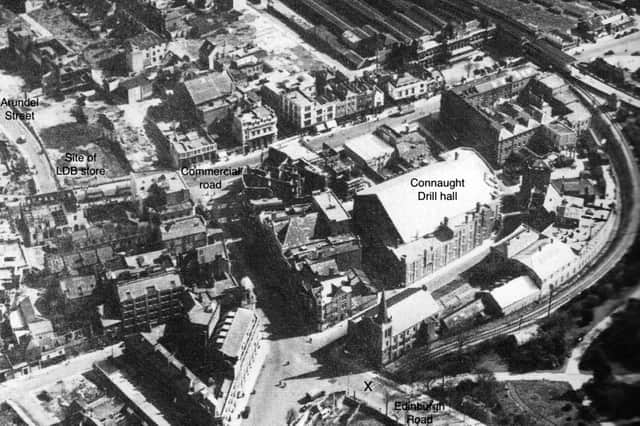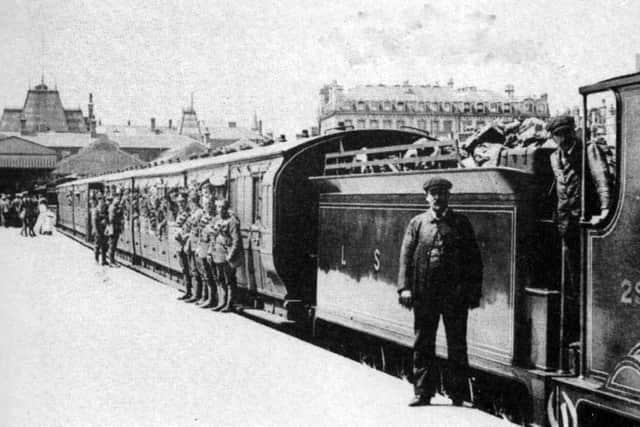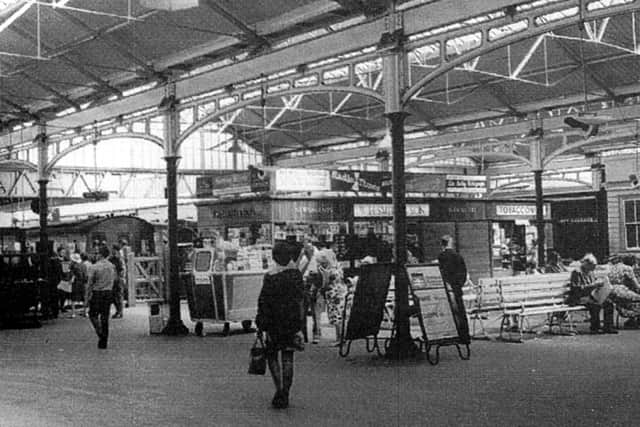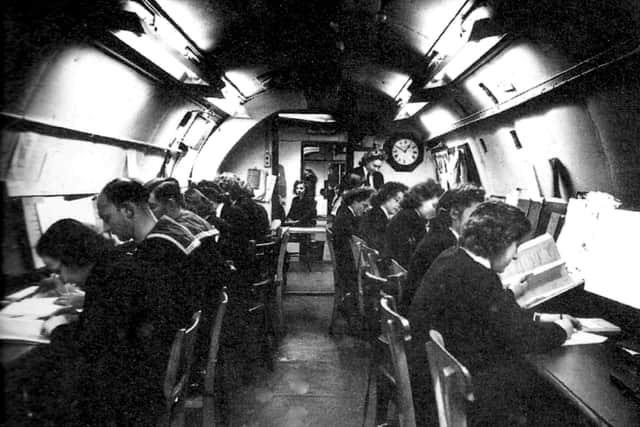Blitzed! Centre of Portsmouth dominated by shells of bombed ruins


In the centre of the picture, taken about 1948, is the junction of Commercial Road and Edinburgh Road and just to the right of it the wrecked Central Hotel.
On the left hand side is the junction of Commercial Road and Arundel Street and on the corner the remains of the  LDB store. Top right is the Town railway station with the General Post Office opposite.
Advertisement
Hide AdAdvertisement
Hide AdIn Stanhope Road is the dominant edifice of the Connaught Drill Hall and across the road the old Evening News offices.


On the right is the Dockyard branch line that left the main line at the High Level station and passed behind the Evening News offices to cross Edinburgh Road where I have placed a large X. Edinburgh Road continues out of the bottom of the picture.
'¢Â Seen at the low level platforms of Portsmouth Town station, as Portsmouth & Southsea was once called, is a troop train waiting to leave. It is taking Hampshire Regiment soldiers to summer camp, perhaps one in the Aldershot area. Â
The locomotive belongs to the London South Western Railway which was in business until 1922 becoming part of Southern Railway in 1923.
Advertisement
Hide AdAdvertisement
Hide AdIt is possible then that these soldiers took part in the First World War and might, within a few years, be called on to serve in France at the outbreak of the Second World War.


'¢Â I recently dropped a line to the letters page of The News complaining about the distance passengers have to walk to pick up a taxi at Portsmouth Harbour station.
Meanwhile, at Portsmouth & Southsea station it is now impossible to buy a newspaper, magazine or cigarettes on that station's concourse.
Quite ludicrous really, but it was not always like that of course.
Advertisement
Hide AdAdvertisement
Hide AdAt one time, at the Town station, Finlay's was on the site seen here occupied by WH Smith & Son. There was also a left luggage office, another long-gone facility at railway stations.Â


'¢Â I wonder what the feeling was about sailors who were not at sea during the war? Did they feel happy that they could almost guarantee seeing their future whereas those at sea stood a relatively high chance of being killed?
Here we see sailors and Wrens deep down in the tunnels of Fort Southwick under Portsdown Hill. This photo is thought to have been taken in the run-up to D-Day when hundreds of naval signals had to be decoded.